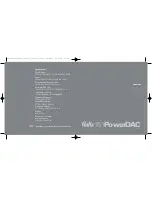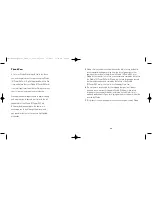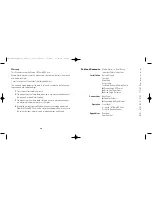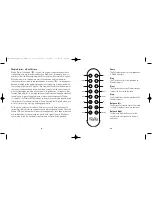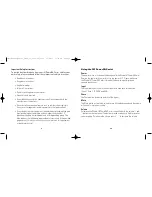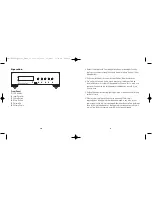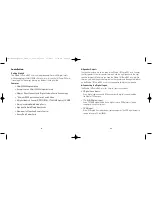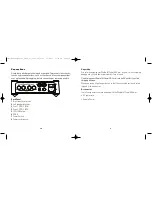
◆
Using AC Line Conditioners
The Wadia 151PowerDAC mini employs extensive power-line filtering and
noise suppression technology so fine performance is available with the Wadia
151PowerDAC mini plugged directly into a wall outlet using the AC power cord
provided. However many users report gains in sound quality when using power
conditioners or after-market power cords. If you wish to experiment with any of
these devices we recommend working with your dealer and trusting your own
ears for what sounds best.
◆
Using a “Surge Protector”
Although the Wadia 151PowerDAC mini resists most significant voltage spikes
it can still be damaged by extreme voltage overload such as a lightning strike.
This type of damage is not covered under warranty. In certain circumstances, a
“surge protector” can prevent this type of damage. If needed, we recommend
a high quality conditioner/surge protection device to avoid the degradation in
sound typical with inexpensive “strip” devices.
11
Installing Battery in Remote Control
The Wadia 151PowerDAC mini remote control requires two AAA batteries. To
install the batteries, remove the battery cover on the back of the remote. Insert
the batteries as indicated on the battery holders, and replace the cover.
◆
Connecting to AC Power
Check to make sure that the power cord shipped with your Wadia
151PowerDAC mini has been manufactured for operation at your AC line
voltage. Damage caused by improper operation is not covered by Wadia
warranty. If the included cable and wall termination is different from your
AC outlet, contact your Wadia dealer.
10
151PowerDAC_Manual_Print_10-27-10:Layout 1 10/28/10 11:17 AM Page 20

